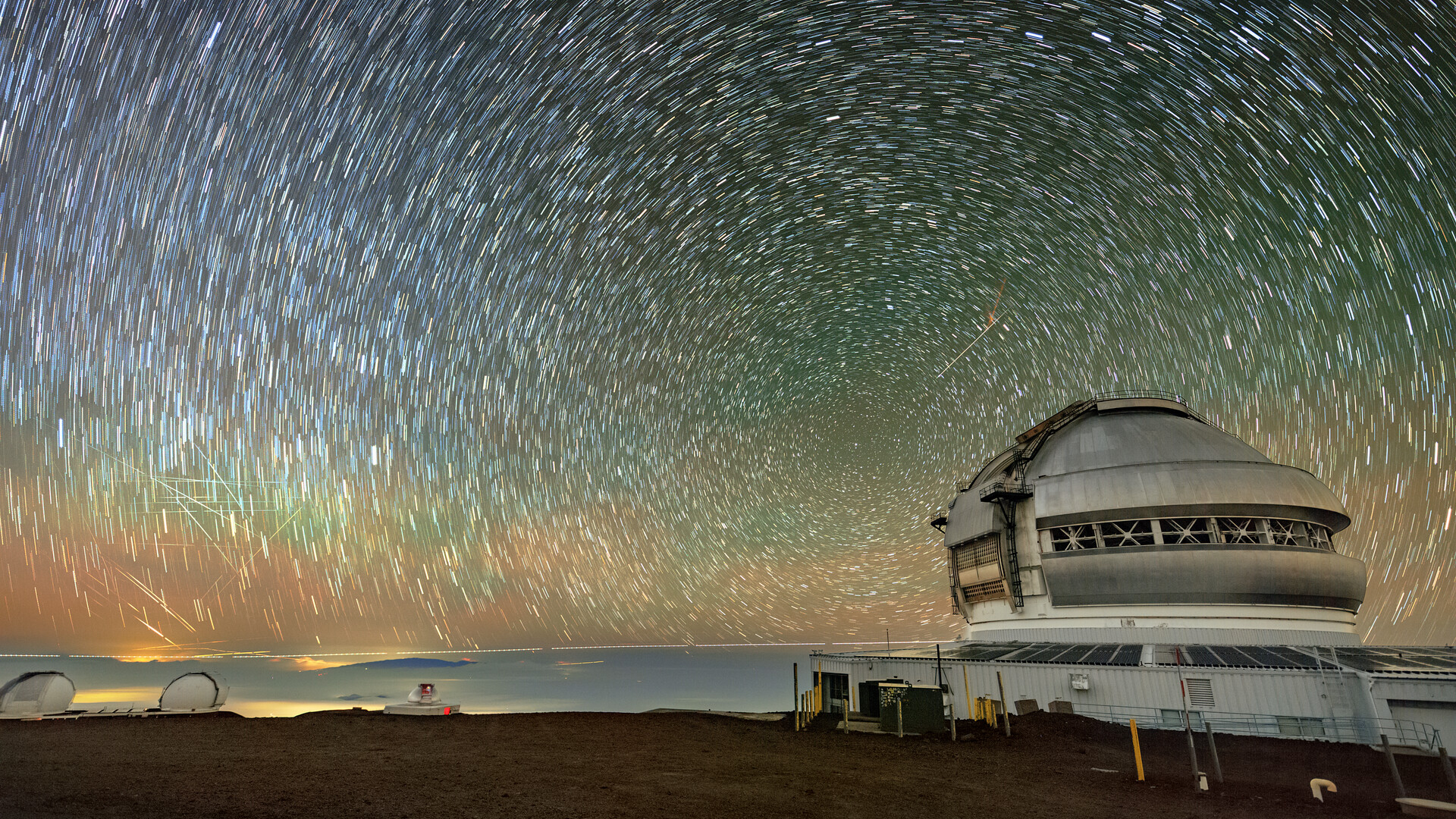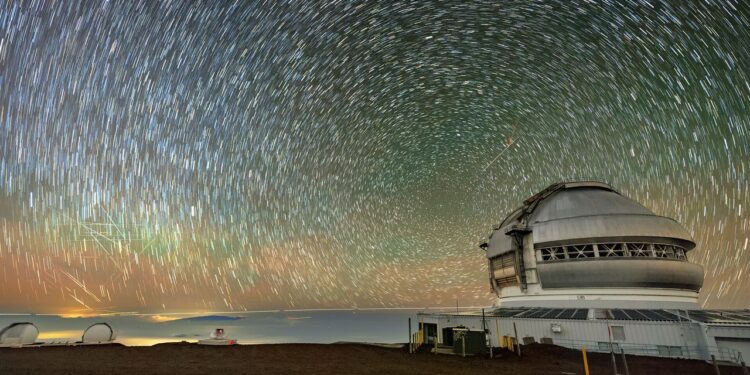As one half of the International Gemini Observatory, the Gemini North telescope in Hawaii provides astronomers with a window into the distant universe, from growing stars to evolving galaxies.
Its twin, Gemini South, is located in the Atacama Desert in Chile. Together, these telescopes form a powerful duo that allows astronomers to observe the entire sky from both hemispheres.
What is it?
In this long-exposure image, the lines of light in the night sky are caused by both stars and satellites moving across the heavens. Satellite streaks in particular are becoming a growing issue for telescopes like Gemini North and Gemini South, as they can affect the accuracy of measurements.
Where is it?
The Gemini North telescope is located on top of Mauna Kea in Hawaii.

Why is it amazing?
In recent years, the growing number of satellites in orbit has increased dramatically as private companies like SpaceX and Amazon launch large satellite constellations to deliver global broadband internet and other services. While these networks bring important technological advances, their presence also means more bright objects moving in the sky.
For observatories like Gemini North and Gemini South, this poses a serious issue. The reflected light from satellites can contaminate astronomical images, obscuring faint celestial objects or creating unwanted artifacts in valuable data. These disruptions make it harder to study phenomena like distant galaxies, near-Earth asteroids and the subtle signatures of exoplanet atmospheres.
To help mitigate this problem, the U.S. National Science Foundation’s NOIRLab, which helps run both Gemini North and Gemini South, co-hosts the Center for the Protection of the Dark and Quiet Sky (CPS), a global collaboration that coordinates research and advocacy efforts to preserve our natural view of the cosmos.
Want to learn more?
You can learn more about satellite pollution and working to protect dark skies.
